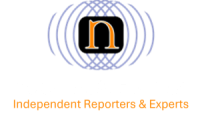The Context
We will start with the world’s most powerful central bank where, following the Federal Reserve’s first interest rate cut of 2025, a large amount of “Fedspeak” provided deeper insights into both the key policy divisions and a growing openness to potential reforms.
The primary policy division centers on the neutral interest rate—specifically, its level and how quickly the Fed should aim to reach it. Underpinning this is a difference in views about the extent of tariff cost pass-through to inflation. Some officials see the recent tepid pass-through as a prelude to something larger, while others view it as indicative of companies’ relatively limited pricing power overall.
On the reform front, the conversation started to appear in public. Three senior Fed officials favored changing the inflation target from a specific point estimate a range. One official argued for the Fed to target a new intermediate policy variable.
All this discussion occurred amid data signaling a resilient U.S. economy, including the fastest quarterly growth rate in two years and inflation stabilizing near 3% (according to the Fed’s preferred gauge, the Core PCE). The income and spending data for the period were slightly stronger than consensus forecasts.
With the Fed signaling further rate cuts despite this resilient data and amid relatively anchored inflationary expectations, market commentary increased regarding the central bank’s willingness to tolerate the current 3% inflation level (marking the fifth consecutive year of missing its official 2% target) while promising to eventually return to 2% sometime down the road (currently specified in 2027).
Markets continued their ascent, with both risk-on assets (equities) and risk-off assets (gold) registering record highs, while credit spreads continued to narrow virtually across the board. U.S. government bond yields edged higher in what was otherwise range-bound trading.
This Week
The U.S. will continue to dominate economic and market sentiment this week, primarily due to negotiations over a potential government shutdown and the release of key labor market statistics.
U.S. Government Shutdown: All eyes will be on Washington as the U.S. Congress attempts to iterate toward an agreement to avoid a government shutdown, the deadline for which is the end of the fiscal year (September 30th). Much depends on the ongoing negotiations between the Administration and Congressional leaders.
U.S. Labor Market: Tuesday’s JOLTS report is expected to show a decline in job vacancies, with the ratio of vacancies to unemployed workers just below one. This is likely to contain the quit rate at a time when other indicators point to growing challenges for job seekers.
Friday’s Non-Farm Payroll (NFP) report is the most widely watched release of the week. Consensus forecasts are for monthly job creation in September of approximately 50,000 and a steady unemployment rate at 4.3% or slightly lower.
In between, Thursday’s weekly new jobless claims are generally expected to edge slightly higher.
Other U.S. Data: The ISM PMIs for both the manufacturing and service sectors are due. Manufacturing is expected to continue lagging with a sub-50 (contractionary) reading, while the service sector should remain in expansionary territory.
Elsewhere, look for…
-
A potential pick-up in Eurozone inflation and a projected moderation in Turkish inflation.
-
A busy week of ECB officials speaking, including President Christine Lagarde, who will provide further color on the Eurozone’s economic and policy outlook.
-
The annual conference of the U.K.’s Labour Party, where Chancellor Rachel Reeves is expected to provide insights into her thinking ahead of the November budget.
-
China’s PMIs which, like Europe’s, will be closely monitored for signs of tepid or decelerating growth.
-
The central bank in Australia (RBA) is expected to remain on hold, while India’s central bank is anticipated to ease policy.
-
Korea’s trade data is likely to show a slowdown in export growth, following the front-loading of shipments to the U.S. earlier due to tariff concerns.
-
Finally, those looking for the Bank of Japan (BOJ) to continue normalizing policy are likely to find support in this week’s Tankan report, which is expected to indicate solid business sentiment.


